This is not an easy post to write. Privilege is being able to forget about a special day set aside for honoring the nearly 2000 missing and murdered Indigenous women, girls, and 2SLGTBQ+ people. Privilege is being able to forget because I don’t know any MMIWG to have to remember. Privilege is seeing red dresses hanging around a park and needing time to remember why they’re there. To say that I’m a person of privilege is an understatement and therefore, I’m not a person who should be writing about this ongoing tragedy.
I’ve provided a number of resources for you to read at the end of this post. These sites, from both Indigenous groups and government, will help you to understand the scope of the problem, calls to action, and provide services for those left behind who are in need of support. Please take the time to read through them as I currently do the same.
While I’m still learning about this horrific situation, here’s a brief summary that will hopefully convince you to learn more as well. The Assembly Of First Nations posts on their website that “Indigenous women make up 16% of all female homicide victims, and 11% of missing women, yet Indigenous people make up only 4.3% of the population of Canada.” In 2016, an independent inquiry was ordered by the Government of Canada to investigate the systemic violence experienced by Indigenous women and girls. The report, “Reclaiming Power and Place” was released in 2019 and is the first link I’ve added at the end of this post. It covers not only the root causes of the problem but also outlines several calls to action.


The REDress Project was started by Metis artist Jaime Black as a response to the almost two thousand of missing women in Canada. This art installation consists of empty red dresses being hung from trees to honor the missing. As a consequence of her work, Red Dress day, held annually on May 5, is a time to remember and demand justice for those who are lost and to work to stop this violence from continuing. Cities and institutions across Canada have been putting up red dresses in May as a gesture of support although, I’m not in a position to comment on the feelings of the First Nations communities regarding what is becoming a somewhat performative action.
While running errands one evening the May, I took my dog for a walk by the Diefenbaker Centre at the University of Saskatchewan. It took me a moment to remember why the red dresses were there and I’m terribly embarrassed to admit that. I took several photos of various dresses along the trails with my Google Pixel 9XL Pro smart phone and edited them in Lightroom to better highlight the dresses. With the way the wind was blowing that evening, making the dresses twirl and dance, it’s not too difficult to wonder about the stolen lives that might have been there on the trail that day, demanding to be seen and heard.
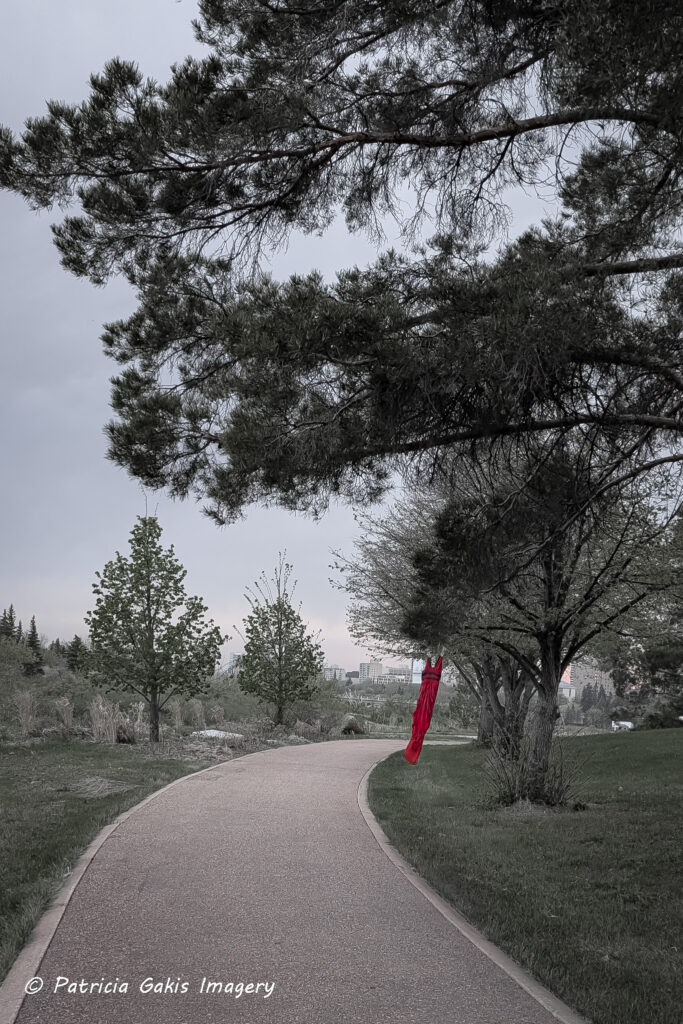
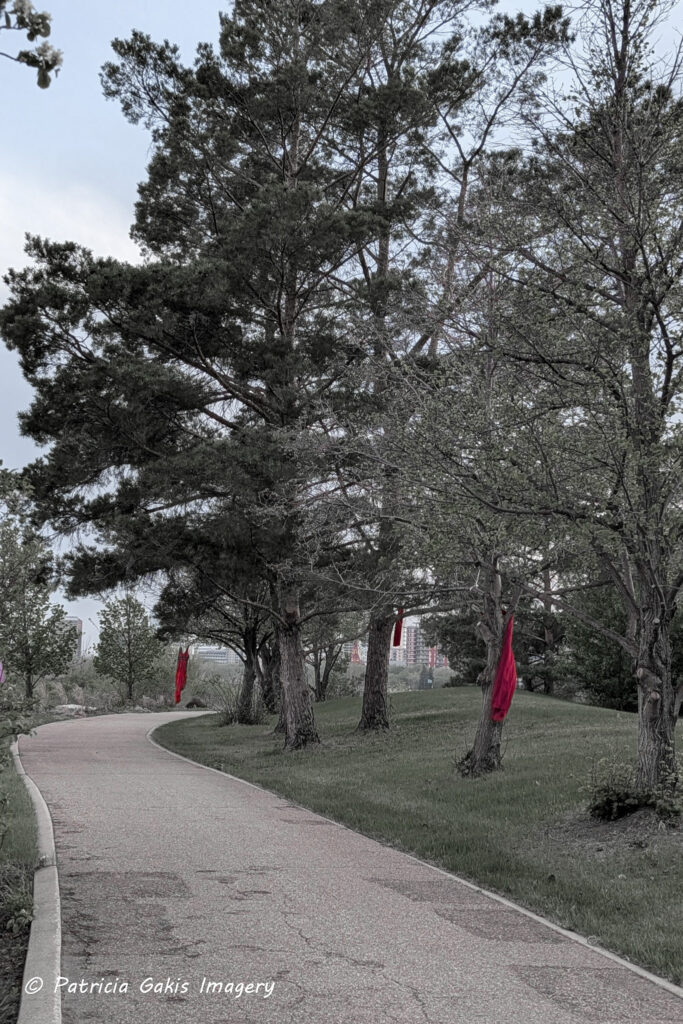
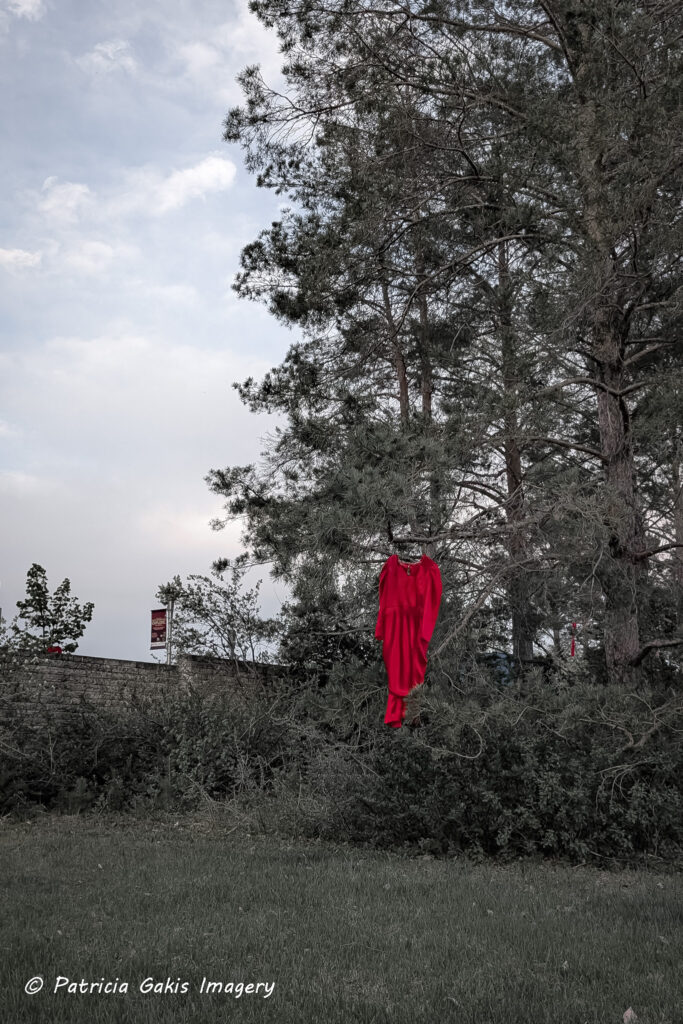
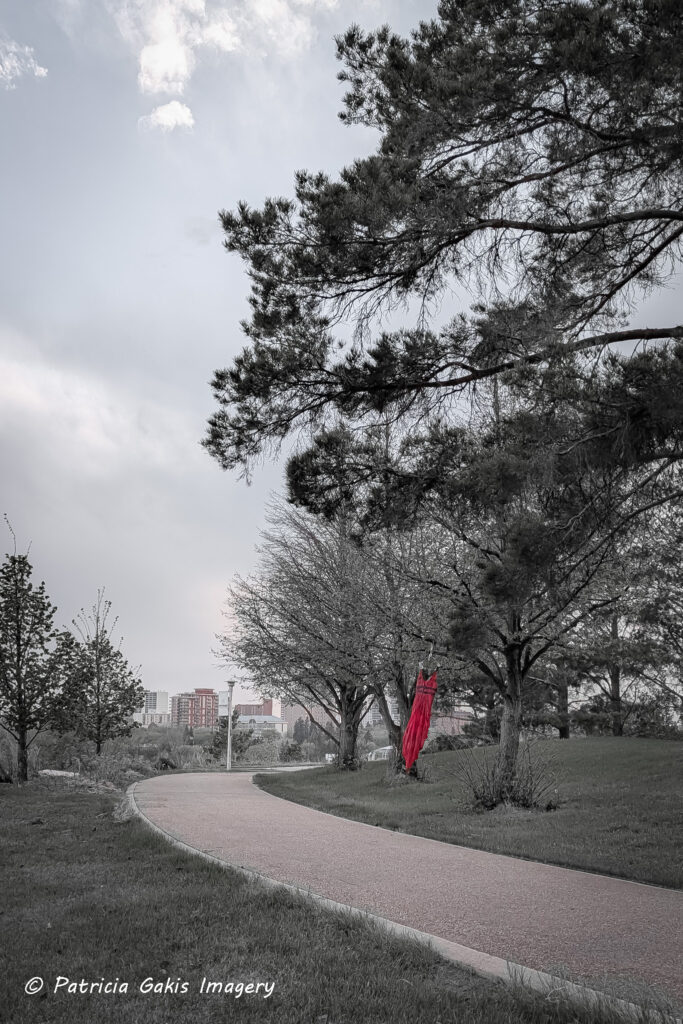


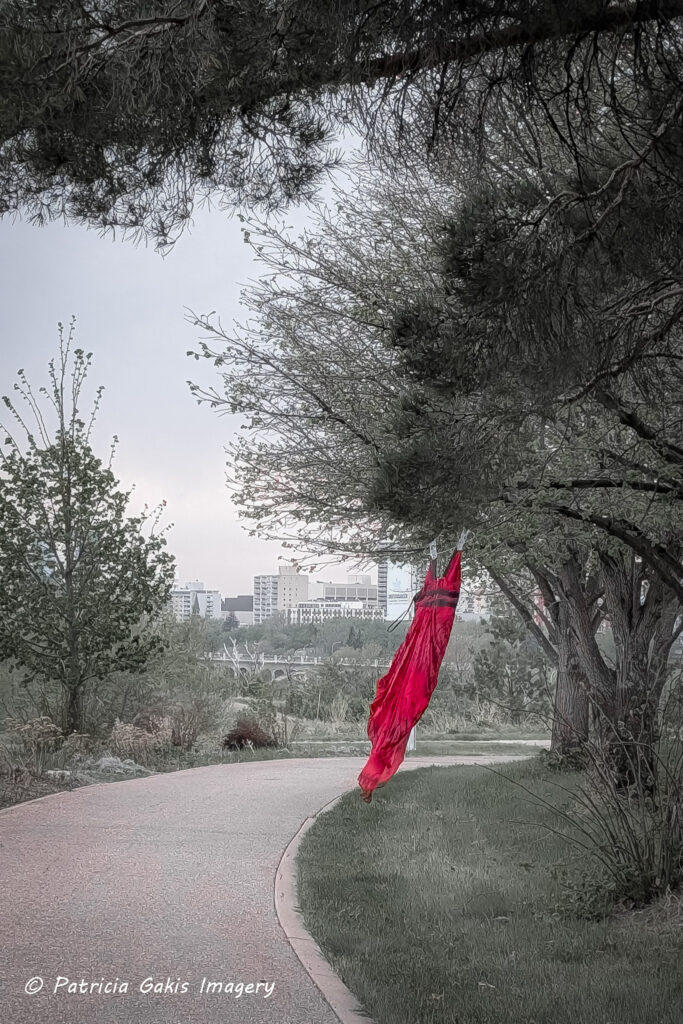
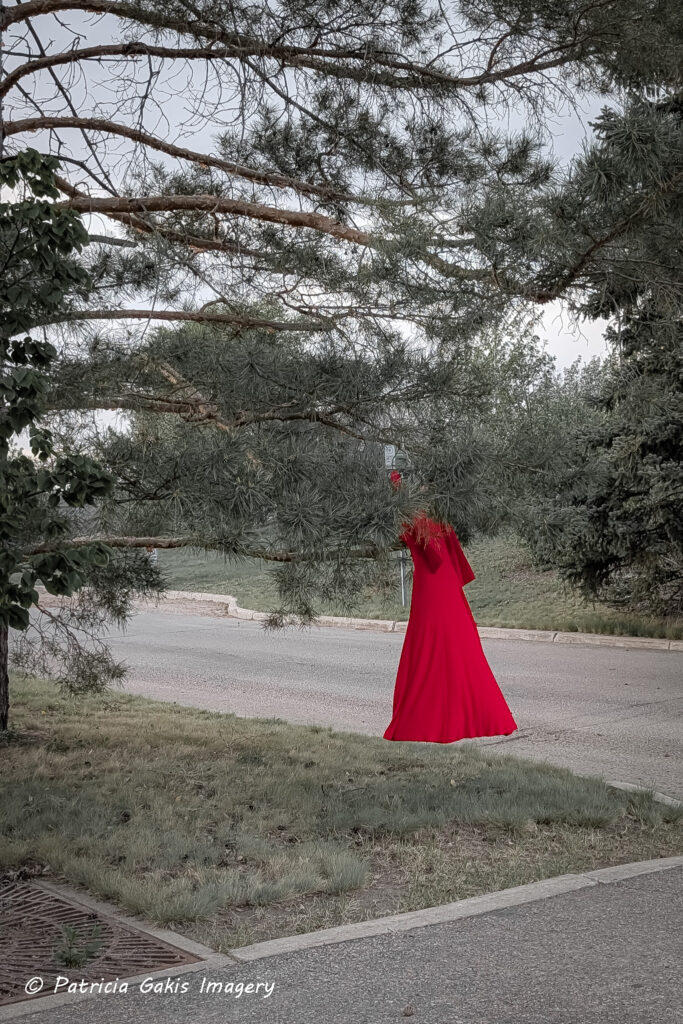
Sources:
If you are in need of help, please call the number below.
- Support Line 1-844-413-6649
Leave a Reply